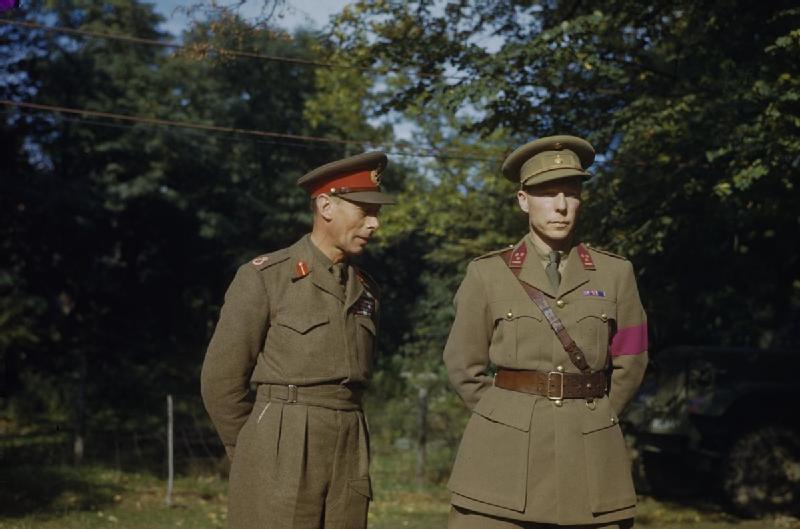October 15, 1980 – Death of Peter of Greece and Denmark
Wikipedia: Peter of Greece and Denmark
With its many overthrows and exiles during the 20th century, the Greek royal family does not lack for interesting stories or unusual characters. However, history has largely forgotten Peter, a French born Greek prince who was a cousin to Kings George II, Alexander, and Paul as well as the current Duke of Edinburgh. But Peter led a very unusual life that led him from India to Egypt to Denmark (with several stops in between), studying various foreign cultures. Peter weathered a morganatic marriage that left him estranged from much of his family, and in his later life shot criticism at his cousin Constantine II for what Peter felt was an illegal change to the Greek succession laws.
Peter was born in Paris, France on December 3, 1908. He was the first child of George of Greece, the second son of George I of Greece, and his French wife Marie Bonaparte. Peter’s sister and only sibling Eugenie was born a little over a year later. The family divided their time mostly between homes in France and Denmark, spending little time in Greece. Peter was educated in London and Paris, where he had planned to study law and politics but instead became interested in anthropology and cultural studies. Peter finally returned to Greece in the 1935 following the restoration of his cousin George II. He served in both the Greek and French armies during his young adulthood.
Due to his royal heritage and place in the line of succession to the Greek throne (he was third in 1935), Peter was considered as a possible husband for at least two European princesses. Peter was said to be a favorite of Juliana of the Netherlands, but Queen Wilhelmina desired a Protestant son-in-law and disliked that Peter’s mother’s fortune had been made through the development of the Monte Carlo casinos. Frederika of Hanover was also suggested as a possible wife for Peter, but she eventually married his cousin Paul in 1938.
Around this time Peter entered into a relationship with Irina Aleksandrovna Ovtchinnikova, a divorced Russian woman separated from her second husband. Peter’s family greatly disapproved of the relationship due to Irina’s commoner status and marital history. Nevertheless, Peter embarked on a trip through present-day India, Pakistan, Tibet, and Sri Lanka with Irina, studying the various groups of people they met. Peter was particularly interested in the polyandry practiced in some areas of the region. Peter and Irina were civilly married September 1939 at the Danish consulate in Madras, India.
The marriage cost Peter both his dynastic rights and his relationship with his father, who swore off contact with his son. Peter maintained contact with his mother and sister, but the onslaught of World War II prevented a long reunion. Peter escaped Greece with the rest of the royal family, settling in Cairo with Irina. The two married religiously in Jerusalem in 1941.
Peter hoped to return to Greece after World War II and the 1944-5 Greek civil war. Peter’s cousin Paul, now king, recognized Peter’s marriage to Irina and offered to let the two return to Greece, but only if Peter renounced his right to the Greek throne, something he had not done despite his marriage to commoner Irina. When Peter refused, Paul barred him from re-entering the country.
After spending a short time in both Denmark and the United States, Peter and Irina returned to India in 1949. The two spent nearly a decade collecting data and traveling around India, Tibet, and Sri Lanka. The two settled for several years in Kalimpong, India, near the borders with Bhutan, Nepal, Bangladesh, and Tibet. During that time, Peter accused the government of India of helping Communist China in its attempt to overthrow Tibet. Peter was asked to leave India in 1957 after some of his activities were, according to Prime Minister Jawaharlal Nehru, “considered undesirable.” Peter resumed his studies in London upon his return, and received a doctorate in anthropology in 1959. His thesis focused on his interest in polyandry and was published as A Study in Polyandry in 1963.
Following his cousin Paul’s death in 1964, Peter entered into a feud with Paul’s son and successor Constantine, who had named his younger sister Irene his successor should he die childless. Peter, who was Constantine’s nearest male relative, was livid and lashed out at Queen Frederika for influencing Constantine into making decisions that (Peter believed) violated Greece’s constitution. Peter called a press conference to air his grievances, also accusing the royal family of extravagance with public money. He continued his fight to be recognized as crown prince of Greece until the birth of Constantine’s son Pavlos in 1967. Peter later apologized for his actions.
After the fall of the Greek monarchy, Peter sold his Greek properties and divided his time between London, Paris, and Copenhagen. He and his wife Irina
separated in the mid-1970s when she relocated to Hong Kong. Peter received an invitation from the Chinese government to resume his studies in Tibet in 1978, which he accepted. Peter was planning a second trip when he died suddenly of a brain hemorrhage in London.
Peter’s memorial mass was held at St. Sophia’s in London. No one in his family reportedly spoke to Irina before or after the service. He requested in his will to be buried at the family cemetery at Tatoi Palace only if Irina could be buried there as well. Although the Greek royal family agreed, the Greek government prohibited a burial at Tatoi. Peter is buried at his Danish home, Lille Bernstorff. Irina was buried next to him after her death in 1990.
Many of the objects Peter collected during his studies in Asia are now held at the National Museum of Denmark and in the Danish Royal Library.
List of Peter’s publications available through the Danish Royal Library




























